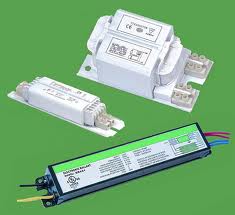Choosing the right high intensity discharge (HID) lighting equipment is a process that takes some consideration. Many variables make up a HID horticultural lighting system, from the type of lamp (bulb) to the wattage and voltage of the unit. With new technologies emerging there is also a big difference in the way our HID bulbs are being illuminated. Regardless of the technology, HID lighting units comprise of two imperative pieces of equipment: the lamp and the ballast.
All arc-type lamps (florescents and HIDs) have the ability to illuminate due to their construction (two electrodes separated by a gas). An arc is the discharge that occurs when the gas contained within the lamp is ionized by an initial burst of voltage. This phenomenon is similar to the way lightning ionizes the atmosphere due to the significant potential difference in voltage from the ground to the storm clouds. Once the bulb is struck, the electrical charge excites the gas molecules inside the bulb causing them to discharge photon particles and, therefore, create light. All HID bulbs rely on this discharge of gas to create light but it is not an instantaneous process. HID bulbs will only produce 5% of their brightness at ignition. Most bulbs require a few minutes of operation before they reach their full light output potential.A ballast is essentially a voltage controller for arc-type discharge lamps. In other words, a ballast is required for any HID or florescent light fixture to work. A ballast main purpose is to regulate voltage to the lamp for start up and operation. Generally speaking, a ballast will provide higher voltage during the lamp?¡¥s start-up and then limit the electrical current during operation to stabilize the arc. If a lamp was directly connected to a constant voltage supply it would draw an increasing amount of current until either the power supply or the lamp itself failed. The ballast acts as an essential buffer between the power supply and the lamp. The initial burst of voltage to the lamp is called the strike. There are two types of ballasts available to horticulturists: magnetic and electronic (digital) ballasts.

Lighting ballasts, also known as magnetic coil and core ballasts, are the most common ballast used to operate HID lighting. This technology has been around since the early 1900?¡¥s and has changed very little in terms of the internal components used. Every HID ballast contains a capacitor and an inductor (the copper or aluminum coils wrapped around the core). A high pressure sodium (HPS) ballast also includes an extra component part, an igniter, which is needed to strike the gases contained within a HPS bulb. A magnetic ballast should be equalled to the specific bulb type and wattage to ensure proper operation. High intensity discharge lamps come in different types (MH, HPS) and different wattages (150, 250, 400, 600, 750, 1000). Each component within the ballast serves an exclusive function in the striking and operation of the HID lamp. Most magnetic ballasts are multi-tap voltage ballasts. In other words, they can be rewired easily to use on the different voltage. Many horticultural ballast suppliers offer ballasts that have interchangeable power cords which change the operating voltage and do not require any internal rewiring.The capacitor the vital role is to maintain power to the bulb once it is fired up. Its other important role is to regulate the power to the bulb. Without a capacitor a HID bulb would continue to draw a growing number of power until the bulb burned out. This is why capacitors need to be rated to the specific wattage of the lamp to operate properly. For example, a capacitor for a 400 watt system will not operate in a 1000 watt system or visa versa. There are two types of capacitors used in HID ballasts: wet and dry capacitors. Wet capacitors or oil filled capacitors can be found on some of the older, lower wattage ballasts but, because of the superior performance of dry capacitors, have become virtually obsolete in the horticultural industry.
Most of the ballasts used for horticulture are equipped with a dry capacitor. These capacitors are also referred to as dry film capacitors because of the mylar, polystyrene, polypropylene, polycarbonate, metallised paper or teflon film used in the internal construction. This film acts as the capacitor dielectrics,because of its resilience to higher temperatures, significantly increases the longevity and reliability of the unit. This is especially important in higher wattage units (600 watts and higher) because they produce much more heat than lower wattage units.
Metal Halide Ballasts | High Pressure Sodium Ballasts | Fluorescent ballasts | Gear Tray
Links: Porcelain lamp socket | Mercury Vapor Ballast | Light bulb socket
Xml Copyright: @2012-2020 James Lighting Electronic Co.,Ltd